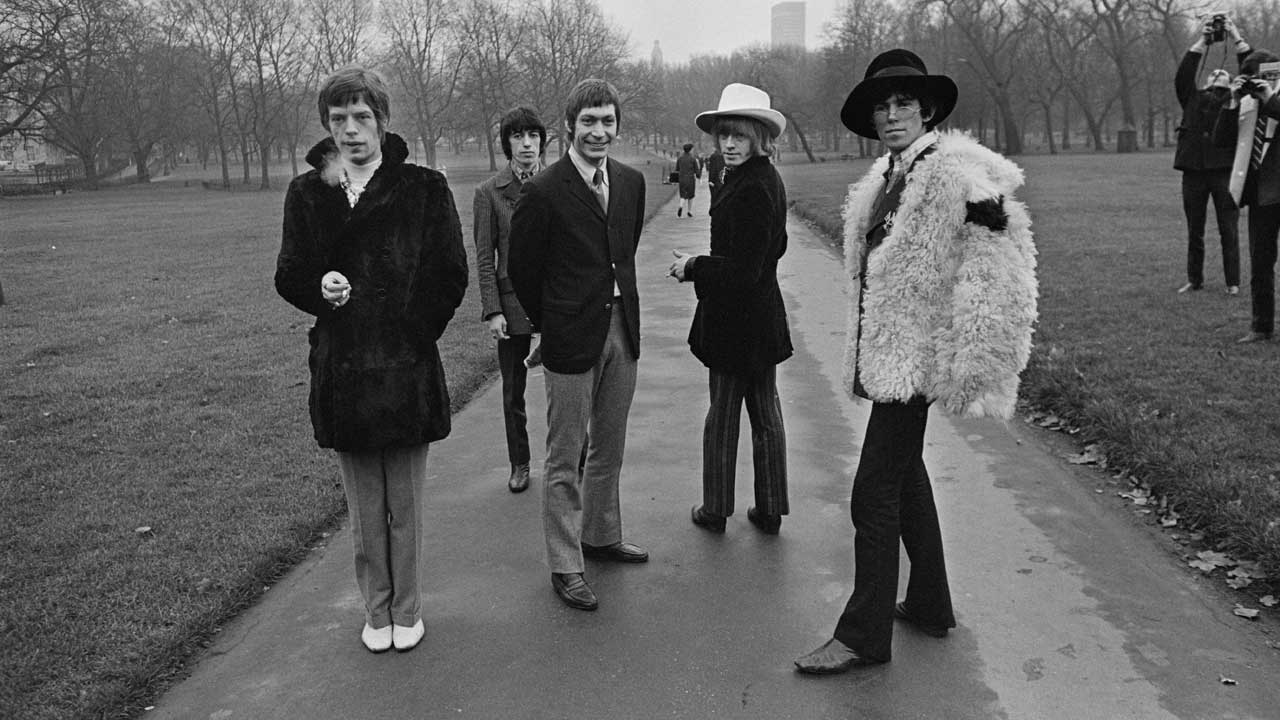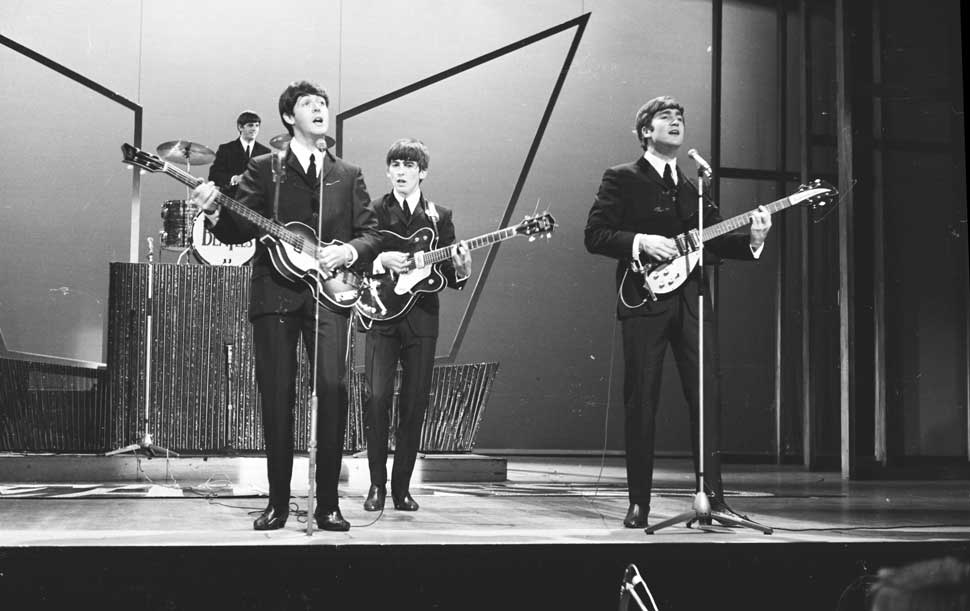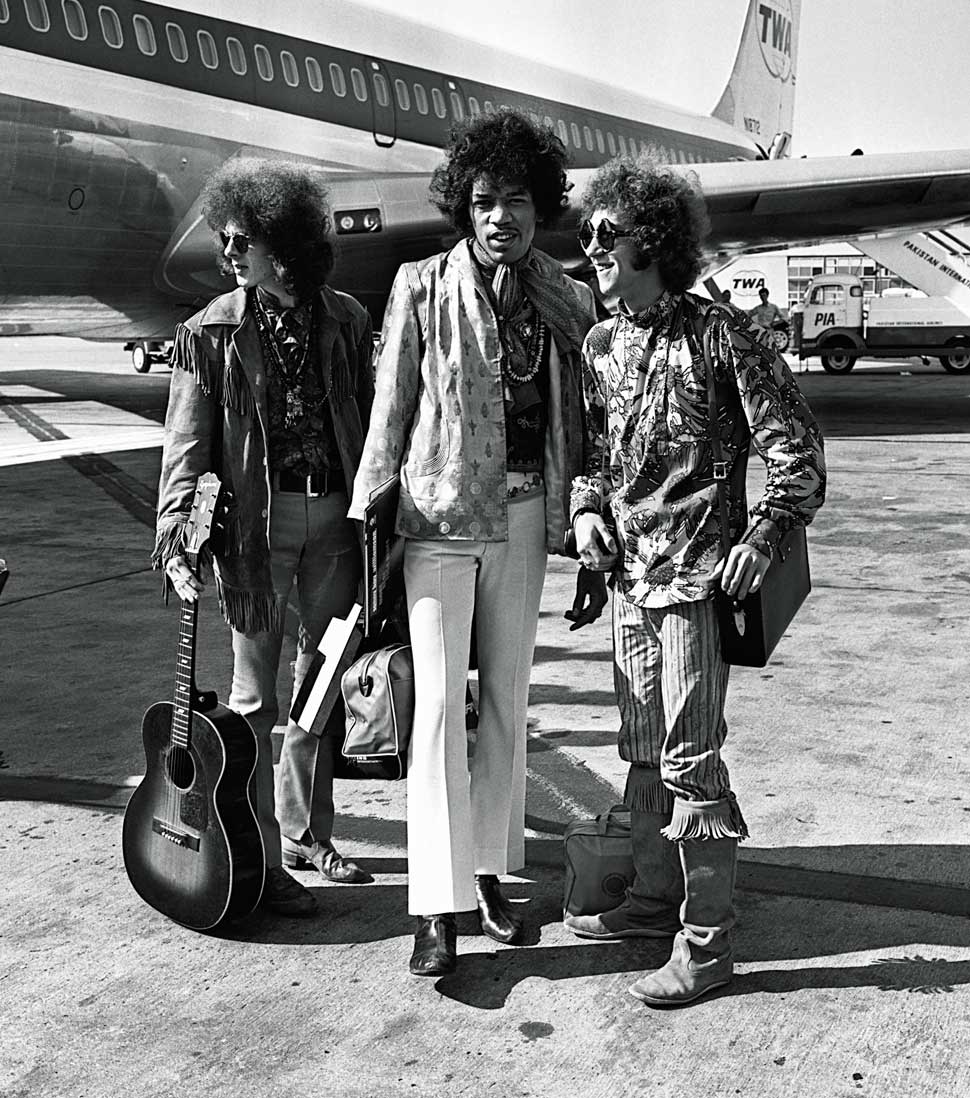
On October 13, 1963, at 8pm, London became the centre of the known pop universe. Why? Because that is when The Beatles appeared on Sunday Night At The London Palladium. Their 12-minute performance was watched on black-and-white TVs by a record 15 million people – including a bright spark of a sub-editor on the Daily Mirror, who coined the term ‘Beatlemania’ for Monday’s edition.
A few weeks later The Beatles gained the royal seal of approval when they headlined the televised Royal Variety Show. And London began to Swing into action.
Even an anti-establishment figure like John Lennon was caught in his own rush. He compared the period to Ancient Rome. “We were like Emperors: nothing we couldn’t have. It was like Fellini’s Satyricon. When we hit the town, we hit it. There was no pissing about. If we couldn’t have groupies we had whores and everything else. Whatever was going.”
Despite their provincial background, The Beatles were circumscribed by London. Both their first and last albums feature iconic images of the capital – the staircase of the EMI building in Manchester Square, Abbey Road in St John’s Wood. They lived in London, they invented psychedelia in London, they opened Apple in London. John and Paul McCartney met their lovers in London. They gave the city a groove that didn’t run out.
Pop stars in the 60s flocked to London’s flagstones paved with promise. The Rolling Stones and the Pretty Things arrived from the sticks; The Kinks were born in Muswell Hill. The Who in the West and the Small Faces in the East created Mod and entrepreneurs sold it in the Mecca of Carnaby Street.
In the wake of the new pop explosion, Denmark Street became a vital meeting place before groups headed off to the Marquee or the Flamingo club. The British blues boomers like Eric Clapton, Jimmy Page and Jeff Beck soon realised that the integrity of a scene masterminded by Alexis Korner and John Mayall needed sharper tailoring and flashier manoeuvres.
On any given day you could bump into Andrew Loog Oldham as he delivered the sheet music for Mick Jagger and Keith Richards’ This Could Be The Last Time, or share a coffee with Beck while he boasted about joining the Yardbirds. There was Donovan with his sidekick Gypsy Dave. You might see the Riot Squad’s Mitch Mitchell and Noel Redding mooching in the Giaconda coffee bar, or overhear the Stones practising at Regent Sound. The young David Bowie hung around, too, feeding off scraps. The record companies and the music press were all within walking distance, as were the TV, radio and advertising houses.

London has always been a magnet for the latest trend. It may not have created all the raw talents, but they wouldn’t have prospered without its say-so. And it provided the live venues: the Odeons, the Astorias, the chic watering holes of Mayfair. And don’t forget the Roundhouse, the setting for the Doors/Jefferson Airplane double header, or the Country Club, a popular haunt for doomed genius Tim Hardin.
If London was good enough for Twiggy, Terence Stamp, Joe Orton and David Bailey, it was good enough for Jimmy Page, who moved to Notting Hill, or Harry Nilsson (who bought Ringo Starr’s Curzon Street flat, in which Mama Cass and Keith Moon both died), or, much later Morrissey, who took up residence in Bayswater, and guarded his privacy by calling himself Mr Atkinson and never answered his door bell.
It’s worth remembering that there is only a decade between the hype of Sgt. Pepper and the unveiling of the Sex Pistols’ Never Mind The Bollocks… Punk was obviously a London phenomenon, although for us denizens of The Smoke we’d seen it coming, that’s if we’d been at Biba in autumn 1973 when the New York Dolls played the rooftop Flamingo Room in Kensington. Malcolm McLaren was there. If he hadn’t been he’d have stayed selling Hawaiian shirts on the Kings Road while his juke box blared out old Elvis Presley hits.
The arrival in London of the Dolls was no big deal press-wise, but their arrival added to the glorious confusion surrounding the glam-rock blitz of Stoke Newington’s mod god Marc ‘Bolan’ Feld, suburban David ‘Bowie’ Jones and the ‘intelligentsia’ movement characterised by Roxy Music, Queen and Genesis.
Even before them we’d seen Lou Reed with The Tots at the old King’s Cross cinema, or a rubbish version of the Velvet Underground at Bumpers Club in Leicester Square, followed in short order by the raw power of Iggy And The Stooges, the whip-cracking ferocity of the J Geils Band at Imperial College, and the Kinks themselves in glorious beer-can-cracking disarray, debuting Lola to the same cross-legged art school students.
And of course there was Jimi Hendrix. He made his London debut at the Bag O’ Nails in Soho in 1966, and introduced Clapton and Pete Townshend’s mob to showmanship and guitar-hero pyrotechnics. Hendrix had charisma, amazing looks and sexy Afro hair to go with his messianic fingers and evil smile. He arrived demanding of his manager: “When do I get to meet The Beatles and the Stones?”
And he did. Beatles manager Brian Epstein took him out to dinner. Brian Jones took him out on the town to Portobello Road and paid two guineas for Jimi’s new outfit – the military Hussar decadence that became emblematic once the Beatles nicked it for their Lonely Hearts Club Band.

A prophet without much honour back home in the US, Hendrix was the new London figurehead, just as Bob Dylan had been three years earlier. The last gig Jimi ever played was at Ronnie Scott’s, jamming with WAR, a brief cameo before his date with death.
After The Beatles split and Hendrix’s demise, London lost some of its lustre. But try telling that to anyone who witnessed Van Morrison, Steely Dan, Steve Miller, Stevie Wonder and Stephen Stills’s Manassas (a lot of Steves), in the era between the Stones’ Sticky Fingers and The Clash’s insistence that there was no Beatles or Stones in 1977. Maybe; but then the two greatest pop culture movies ever are arguably Nic Roeg’s Performance, set in Notting Hill Gate, and Bruce Robinson’s Camden Town tragedy Withnail And I.
Punk only set out to destroy something that had already self-destructed by design. London became regional, it developed a parochial phase. Meteoric local bands like The Stranglers (Doors wannabes) or the ska-inflected Madness exhibited a deliberate inferiority complex compared to the dinosaurs they were designed to replace.
The artisan DIY approach meant that London relinquished its status back to Manchester – in the shape of stay-at-homes like Joy Division and The Smiths – or the new Liverpool scene of Echo And The Bunnymen and Teardrop Explodes. True, the behemoths were reviled, and London was implicated in the collusion of a fat music industry bloated on cocaine and bereft of direction, but it was the template against which the Northerner measured his chippy wrath.
Post-punk, and leading towards the period of Baggy Madchester and its apotheosis – Oasis – London became a heritage-trail bus tour. Blur and the Gallaghers revived the old traditions with a media-inspired rivalry that inspired the British Invasion MkII – a fatuous, Union Jacked-up tiff that was sold on the cover of Vanity Fair like a pig in a poke.
Thereafter, reality kicked in once rave, house, hip-hop and the internet – not to mention the early death throes of the music business as a London-based concern – spread like a virus. Today London doesn’t mean much to contemporary rock/pop music. It doesn’t have any great bands, and it doesn’t have many great venues.
Yes, Led Zeppelin chose to play the O2 Arena, but so did the Spice Girls. The magic has vanished. And I say that as someone who was born in WC1 and who bumped into John Lennon and Paul McCartney in 1964, in Gray’s Inn Fields, while I was walking to primary school, clutching a satchel and whistling The Beatles’ This Boy.
On that morning I felt like I was at the centre of the centre of the pop universe. Looking now it’s more a case of nostalgia – a Waterloo Sunset. London kills me. But thank you for the days.
This feature originally appeared in Classic Rock 117, published in April 2008.







